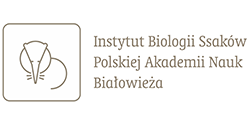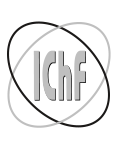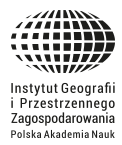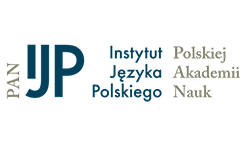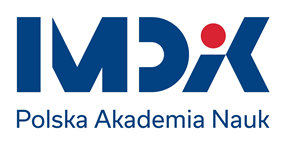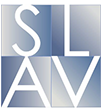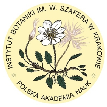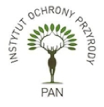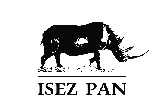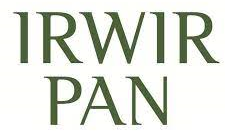- Search in all Repository
- Literature and maps
- Archeology
- Mills database
- Natural sciences
Advanced search
Advanced search
Advanced search
Advanced search
Advanced search

Object
Title: Family farming in the development process. Conclusions and recommendations
Creator:
Sourisseau, Jean-Michel ; Bonnal, Philippe ; Marzin, Jacques ; Loscha, Bruno ; Bosc, Pierre-Marie
Date issued/created:
Resource type:
Publisher:
Instytut Rozwoju Wsi i Rolnictwa Polskiej Akademii Nauk
Place of publishing:
Type of object:
Abstract:
Family farming is the dominant form of agricultural production in the contemporary world. It fulfills various important economic (food security, employment, etc.) as well as other (social, environmental, etc.) functions. It is an extremely differentiated phenomenon resulting from various interrelationships among such factors, as: access to resources, investment potential, self-consumption, relations between farms and the market, families’ vocational activities, differentiation and specialization of production, substitution of family work-force by capital, the goals for the functioning of the farm as well as results of actions.Modern and intensive family farms in highly developed countries (Western Europe, North America, Australia) are a result of a so-called conventional (classic) way of modernization and account for only 2% of all family farms existing in the contemporary world. This implies that the result of a so-called “industrial revolution” in agriculture is not observed all over the world. It also means that the repetition of this “classic” way of modernization resulting in the growing level of productivity and a structural diversification in agricultural economy seems to be a impossible goal in the coming decades. This can be attributed, to the effects of demographic pressure, food shortages and a lack of financial resources especially in Asia and Africa.Basing on such a diagnosis the author suggests a re-definition of global policies focused on family farming. There should be a more integrative and multi-sector approach taking into consideration such issue as: diversity of the family farming phenomenon, multi-functionality of family farms, treating them as an important type of a public good, control of market mechanisms and speculation issues, strengthening of cooperation and risk reduction activities in agriculture as well as the relation between the family and the farm. Such an approach requires new institutional frameworks for family farming and for agricultural policies to take into consideration territorial and regional differences.
References:
Altieri M.A., 2008: Small Farms as a Planetary Ecological Asset: Five Key Reasons Why We Should Support the Revitalisation of Small Farms in the Global South. Third World Network. Penang, Malaysia 18 p.
Bélieres J.-F., Bosc P.-M., Faure G., Fournier S., Losch B., 2002: What future for West Africa’s family farms in a world market economy? London: IIED, 36 p. (Issue paper No. 113).
Bélieres J.F., Bonnal P., Bosc P.M., Losch B., Marzin J., Sourisseau J.M., 2014: Les agricultures familiales du monde. Définitions, contributions et politiques publiques. Paris: Agence Française de Développement, collection „a savoir”, No. 29.
Bernstein H., Byres T.J., 2001: From peasant studies to agrarian change. Journal of Agrarian Change, No. 1 (1), s. 1–56.
![]()
Bisilliat J., 2000: Luttes féministes et développement: une perspective historique. (Cahiers genre et développement No. 1, pp. 19–31).
![]()
Brookfield H., 2008: Family Farms are Still Around: Time to Invert the Old Agrarian Question? Geography Compass, No. 2 (1), pp. 108–126.
![]()
Chang H.-J., 2002: Kicking Away the Ladder: Development Strategy in Historical Perspective. Anthem Press, London.
Chenery H., Syrquin M., 1975: Patterns of Development, 1950–1970. Oxford University Press, London.
Collectif, 2014: Diversité des agricultures familiales. Exister, se transformer, devenir Ed. Qua (Nature et Société), Versailles.
Collier P., Dercon S., 2014: African Agriculture in 50 Years: Smallholders in a Rapidly Changing World? World Development Vol. 63, pp. 92–101.
![]()
Deininger K., Byerlee D., Lindsay J., Norton A., Selod H. et Stickler M., 2010: Rising Global Interest in Farmland. Can it yield sustainable and equitable benefits? Washington D.C., The World Bank, http://siteresources.worldbank.org/INTARD/Resources/ESW_Sept7_final_final.pdf
Dorin B., Hourcade J.C., Benoit-Cattin M., 2013: A World Without Farmers? The Lewis Path Revisited. CIRED Working paper No. 47 http://www.centre–cired.fr/spip.php?article1508
Fan S., Brzeska J., Keyzer M., Halsema A., 2013: From Subsistence to Profit. Transforming Smallholder Farms. IFPRI, Food Policy Report, June 2013, Washington, 30 p.
![]()
FAO, 2011: Le rôle des femmes dans l’agriculture: combler le fossé entre les hommes et les femmes pour soutenir le développement. Organisation des Nations Unies pour l’Alimentation et l’Agriculture, Rome, 174 p.
FAO, 2012a: 2000 World Census of Agriculture. Analysis and International Comparison of the Results (1996–2005). FAO Statistical Development Series, 13, Rome,148 p.
FAO, 2012b: The State of Food Insecurity in the World 2012. FAO, Rome. http://www.fao.org/docrep/016/i3027e/i3027e.pdf
Friedmann H., 1978: World Market, State, and Family Farm: Social Bases of Household Production in the Era of Wage Labor. Comparative Studies in Society and History, No. 20 (4), pp. 545–86.
![]()
Hazell P., Poulton C., Wiggins S., Dorward A., 2002: The Future of Small Farms for Poverty Reduction and Growth. Washington, DC, IFPRI, 2020 Discussion Paper 42, 38 p. http://www.ifpri.org/sites/default/files/pubs/2020/dp/vp42.pdf
HLPE, 2013: Investing in smallholder agriculture for food security. A report by the high level panel of experts on food security and nutrition. CFS-HLPE, Rome,112 p. http://www.fao.org/fileadmin/user_upload/hlpe/hlpe_documents/HLPE_Reports/HLPE-Report-6_Investing_in_smallholder_agriculture.pdf
IAASTD, 2008: Agriculture at a crossroads. International Assessment of Agricultural Knowledge, Science and Technology for Development. Global report. Washington, Islandpress, 606 p. http://www.unep.org/dewa/agassessment/reports/IAASTD/EN/Agriculture%20at%20a%20Crossroads_Global%20Report%20(English).pdf
IFAD, 2010: Rural Poverty Report 2011. New Realities, New Challenges: New Opportunities for Tomorrow’s Generation. IFAD, Rome, 319 p.
Lamarche H., 1994: L’agriculture familiale. Du mythe a la réalité. Tome 2. L’Harmattan, Paris, 300 p.
Losch B., Fréguin-Gresh S., White E., 2012: Structural Transformation and Rural Change Revisited: Challenges for Late Developing Countries in a Globalizing World. World Bank-Agence française de développement.
![]()
Losch B., Bosc P-M., Devautour H., 2005: Programme „ Agricultures familiales et mondialisation” (AFM), 1998–2004. Filiation et perspectives d’une recherche collective, Esquisse d’une trajectoire de recherche. [in:] Agricultures familiales et mondialisation, cédérom, Bosc P.-M., Devautour H., Losch B. (éds). CIRAD, Département Tera.
Lowder S.K., Skoet J., Singh, S., 2014: What do we really know about the number and distribution of farms and family farms worldwide? Background paper for The State of Food and Agriculture 2014. ESAWorking Paper No. 14–02. FAO, Rome.
Mazoyer M., Roudart L., 1997: L’histoire des agricultures du monde: du néolithique a la crise contemporaine. Seuil, Paris.
Mazoyer M., 2001: Protéger la paysannerie pauvre dans un contexte de mondialisation. FAO, Rome, 28 p.
Rastoin J.-L., Ghersi G., 2010: Le systéme alimentaire mondial. Concepts et méthods, analyses et dynamiques. Editions QUAE, Paris, 565 p.
![]()
Sourisseau J.-M., Bosc P.-M., Freguin-Gresh S., Bélieres J.-F., Bonnal P., Le Coq J.-F., Anseeuw W., Dury S., 2012: Les modeles familiaux de production agricole en question. Comprendre leur diversité et leur fonctionnement. Autrepart (62), pp. 159–181.
![]()
Sourisseau J.M. (ed.), 2014: Agricultures familiales et mondes a venir. Ed. Quae, Versailles, 360 p.
Timmer P., 2009: A World without Agriculture. The structural Transformation in Historical Perspective. American Entreprise Institute. The AEI Press, Washington, DC.
Verschuur C., 2011: Du grain a moudre. Genre, développement rural et alimentation. Actes du colloque genre de l’Institut de Hautes Etudes Internationales et du Développement, Geneve, Berne.
![]()
Wiggins S., Kirsten J., Llambí L., 2010: The Future of Small Farms. World Development, No. 38 (10), pp. 1341–1348.
![]()
World Bank, 2007. WDR 2008: Agriculture for Development. Washington DC, 390 p. http://siteresources.worldbank.org/INTWDR2008/Resources/2795087-1192111580172/FINAL_WDROV-French-text_9.25.07.pdf
Relation:
Issue:
Start page:
End page:
Resource Identifier:
oai:rcin.org.pl:243075 ; doi:10.53098/wir.2015.1.1.166.1/02 ; 0137-1673 (print); 2657-5213 (on-line)
Source:
Language:
Language of abstract:
Rights:
Creative Commons Attribution BY 4.0 license
Terms of use:
Digitizing institution:
Institute of Rural and Agricultural Development of the Polish Academy of Sciences
Original in:
Library of the Institute of Rural and Agriculture Development of the PAS
Projects co-financed by:
Access:
Object collections:
- Digital Repository of Scientific Institutes > Literature > Journals/Articles
- Digital Repository of Scientific Institutes > Partners' collections > Institute of Rural and Agricultural Development PAS > Library collections
Last modified:
Mar 17, 2025
In our library since:
Dec 13, 2024
Number of object content downloads / hits:
0
All available object's versions:
https://rcin.org.pl./publication/280033
Show description in RDF format:
Show description in RDFa format:
Show description in OAI-PMH format:
| Edition name | Date |
|---|---|
| Znaczenie rolnictwa rodzinnego w procesach rozwoju. Wnioski i rekomendacje | Mar 17, 2025 |

 INSTYTUT ARCHEOLOGII I ETNOLOGII POLSKIEJ AKADEMII NAUK
INSTYTUT ARCHEOLOGII I ETNOLOGII POLSKIEJ AKADEMII NAUK
 INSTYTUT BADAŃ LITERACKICH POLSKIEJ AKADEMII NAUK
INSTYTUT BADAŃ LITERACKICH POLSKIEJ AKADEMII NAUK
 INSTYTUT BADAWCZY LEŚNICTWA
INSTYTUT BADAWCZY LEŚNICTWA
 INSTYTUT BIOLOGII DOŚWIADCZALNEJ IM. MARCELEGO NENCKIEGO POLSKIEJ AKADEMII NAUK
INSTYTUT BIOLOGII DOŚWIADCZALNEJ IM. MARCELEGO NENCKIEGO POLSKIEJ AKADEMII NAUK
 INSTYTUT BIOLOGII SSAKÓW POLSKIEJ AKADEMII NAUK
INSTYTUT BIOLOGII SSAKÓW POLSKIEJ AKADEMII NAUK
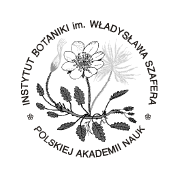 INSTYTUT CHEMII FIZYCZNEJ PAN
INSTYTUT CHEMII FIZYCZNEJ PAN
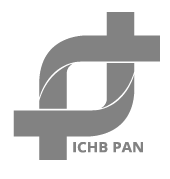 INSTYTUT CHEMII ORGANICZNEJ PAN
INSTYTUT CHEMII ORGANICZNEJ PAN
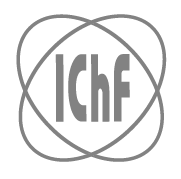 INSTYTUT FILOZOFII I SOCJOLOGII PAN
INSTYTUT FILOZOFII I SOCJOLOGII PAN
 INSTYTUT GEOGRAFII I PRZESTRZENNEGO ZAGOSPODAROWANIA PAN
INSTYTUT GEOGRAFII I PRZESTRZENNEGO ZAGOSPODAROWANIA PAN
 INSTYTUT HISTORII im. TADEUSZA MANTEUFFLA POLSKIEJ AKADEMII NAUK
INSTYTUT HISTORII im. TADEUSZA MANTEUFFLA POLSKIEJ AKADEMII NAUK
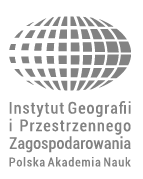 INSTYTUT JĘZYKA POLSKIEGO POLSKIEJ AKADEMII NAUK
INSTYTUT JĘZYKA POLSKIEGO POLSKIEJ AKADEMII NAUK
 INSTYTUT MATEMATYCZNY PAN
INSTYTUT MATEMATYCZNY PAN
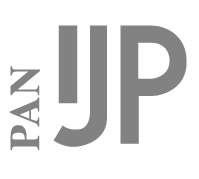 INSTYTUT MEDYCYNY DOŚWIADCZALNEJ I KLINICZNEJ IM.MIROSŁAWA MOSSAKOWSKIEGO POLSKIEJ AKADEMII NAUK
INSTYTUT MEDYCYNY DOŚWIADCZALNEJ I KLINICZNEJ IM.MIROSŁAWA MOSSAKOWSKIEGO POLSKIEJ AKADEMII NAUK
 INSTYTUT PODSTAWOWYCH PROBLEMÓW TECHNIKI PAN
INSTYTUT PODSTAWOWYCH PROBLEMÓW TECHNIKI PAN
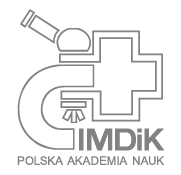 INSTYTUT SLAWISTYKI PAN
INSTYTUT SLAWISTYKI PAN
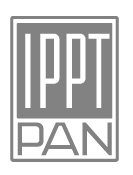 SIEĆ BADAWCZA ŁUKASIEWICZ - INSTYTUT TECHNOLOGII MATERIAŁÓW ELEKTRONICZNYCH
SIEĆ BADAWCZA ŁUKASIEWICZ - INSTYTUT TECHNOLOGII MATERIAŁÓW ELEKTRONICZNYCH
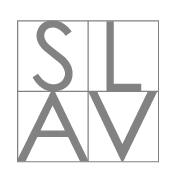 MUZEUM I INSTYTUT ZOOLOGII POLSKIEJ AKADEMII NAUK
MUZEUM I INSTYTUT ZOOLOGII POLSKIEJ AKADEMII NAUK
 INSTYTUT BADAŃ SYSTEMOWYCH PAN
INSTYTUT BADAŃ SYSTEMOWYCH PAN
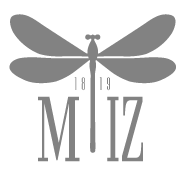 INSTYTUT BOTANIKI IM. WŁADYSŁAWA SZAFERA POLSKIEJ AKADEMII NAUK
INSTYTUT BOTANIKI IM. WŁADYSŁAWA SZAFERA POLSKIEJ AKADEMII NAUK












